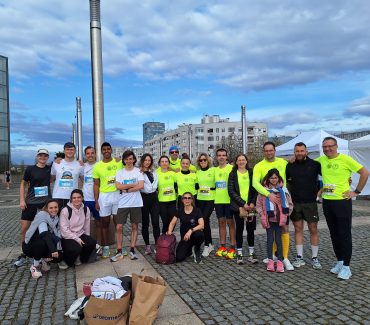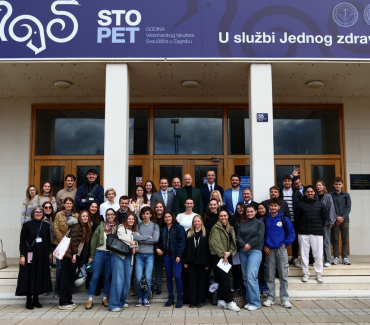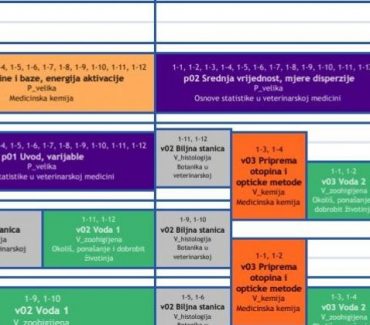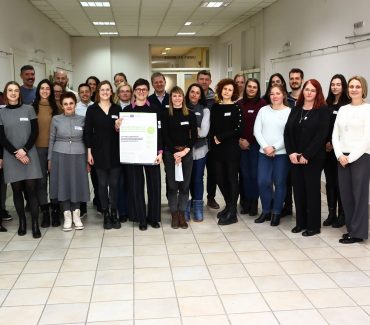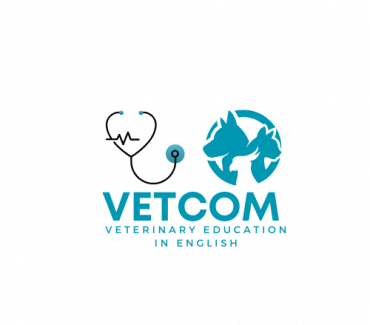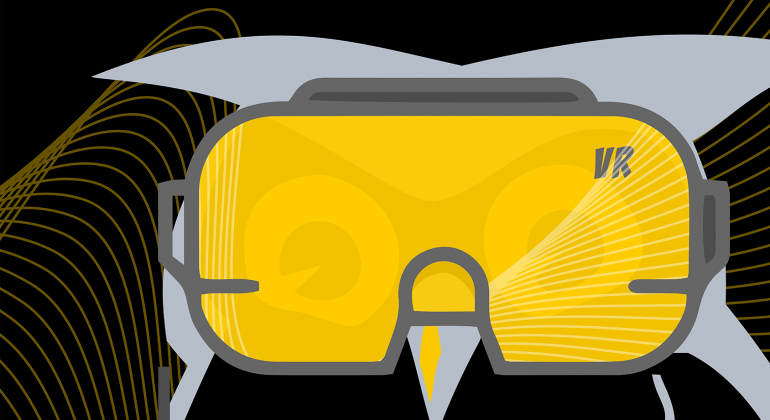
Over the past two pandemic years, the Veterinary Faculty of the University of Zagreb has faced a major challenge – classes, which are almost impossible to hold without direct contact because mastering veterinary skills and knowledge requires a significant amount of exercises, seminars and practical work in laboratories and with animals, had to be organized on several occasions in on-line form almost overnight. We managed extremely well in this so this year, as part of Museum Night, on Friday 28th January from 18.00 to 23.00 hours, we will show visitors how veterinary medicine used to be studied, and what changes the digital age has brought, what we have retained of the old ways, and the new things we have applied. Visitors will be able to see equipment, from instruments used in past centuries during difficult births, operations and castration, to contemporary digital teaching solutions and the use of artificial intelligence in diagnostics and treatment of animals.
The Department of Veterinary Pathology – the Museum of Veterinary Pathology
The museum collection consists of about 3000 specimens showing pathological changes to the organs of different animal species, human organs, and calcolosi and foreign bodies collected since 1923 as part of the clinical work of the Department. Other items of interest in the museum are specimens of animal diseases that have been eradicated in Croatia, such as glanders, tuberculosis and foot and mouth disease, but also congenital deformities. In view of the challenges we have been facing in recent years – the COVID-19 pandemic, which means that we are experiencing various forms of online classes, but also the earthquakes in the Republic of Croatia, which mean that some of our specimens now require restoration, the need has arisen to preserve the museum collection for present and future generations of students and experts in the field of veterinary pathology. So, as part of a specific project, more than 600 specimens have been photographed, some of them using rotation. In addition, our visitors will be able to see a low-cost scanner, used for creating virtual histological specimens. The purpose of this and similar scanners is the digitalization of histological specimens that are needed in the field of patho-histology, and diagnostics of pathological conditions, but also for making a diagnosis using artificial intelligence.
The Department of Biology and Pathology of Fish and Bees – educational archive station for bee-keeping
Exhibition and Workshop: BeesConnect at VEF
BeesConnect at VEF, as part of the Museum Night with the title Museums – Between the Real and the Digital, will include a comparative presentation of museum and contemporary exhibits showing individual parts of the biology, physiology and pathology of bees, bee-keeping technology, and related stories about good bee-keeping, and veterinary and ecological practices, that make it possible to produce bee products successfully.
As part of the exhibition, a mini workshop will be held where selected anatomic specimens of the individual parts of bees’ bodies will be shown under a microscope, whereby visitors will be able to learn about the structure of bees’ bodies, and how methods have developed to study the biology and physiology of bees at the Veterinary Faculty. For group visits of students from elementary and high schools workshops are planned with a competitive element in recognizing and describing the function of exhibits by comparing them with digital photographs, and for the youngest there will be a competition in drawing and creating bee hives.
In addition, as part of the programme, a VEF educational film will be premièred about the importance biology and diseases of bees.
As part of the adjustment to teaching new generations of students, young people and children, a special page will be designed and posted on social media, where we will publish current items, which will follow the content of the bee exhibition in digital form, and in a simple and easily accessible way.
The Department of Animal Breeding and Livestock Production
During Museum Night, the following will be on display:
- the museum collection of sculptured animal motifs by the sculptor Robert Frangeš Mihanović (1872 – 1940)
- stuffed specimens of rabbits and poultry, feathers, and cattle and horses’ teeth
- 3D virtual models of the museum collection of animal motifs by the sculptor Robert Frangeš Mihanović (1872 – 1940) and the collection of cattle and horses’ teeth
- the Department’s library and archive furniture are original pieces created according to the designs by the architect Zvonimir Vrkljan (1902 – 1999)
- a reconstructed Department laboratory in which laboratory equipment will be exhibited (scales, burners, pipettes, centrifuges, a spectrophotometer) and other apparatus that was used in scientific and professional activities in the middle of the 20th century.
- teaching equipment used in the Department before digitalization and modern technology
- museum pictures from the Department’s archives, and educational posters presenting indigenous Croatian breeds of domestic animals by species
- an educational video presentation entitled Original Breeds – our Treasurewith animation and verbal recordings presenting indigenous Croatian breeds of domestic animals by species
The Department of Forensic and Judicial Veterinary Medicine
As every year, visitors will be shown the instruments veterinarians used at various times during the development of veterinary medicine in the field. This primarily relates to instruments they used to help with difficult births, and embryotomy and castration of male animals. Visitors will be introduced to the problems veterinarians worked to resolve over the course of history and as the veterinary profession developed, including the development of teaching activities at the Veterinary Faculty from its foundation. In the same way, visitors will have the opportunity to see the original certificates of the first Croatian veterinarians, blacksmiths and butchers in the period from 1867 to 1923, various documents belonging to well-known veterinary experts, a large number of passports issued from 1861 to 1890, and regulations on livestock passports.
The Surgery, Orthopaedics and Ophthalmology Clinic
At the Surgery, Orthopaedics and Ophthalmology Clinic, in the facilities used for examining horses, there will be an exhibition of old books, exhibits, instruments and posters on surgery and anaesthesia through history.
The Department of Anatomy, Histology and Embryology – Histology Practice Room
Exhibition and Workshop: INSTA(NT) – vef_hista
The exhibition INSTA(NT) – vef_hista as part of Museum Night will include a comparative presentation of embryological “sauces”, a unique collection of pictures of histological organs and tissue (110 oil paintings by Silvio Trapan), and photographs of embryological exhibits and histological specimens on the vef_hista instagram page, with detailed descriptions. As part of the exhibition there will also be a mini workshop with a practical part, involving microscope examination of selected specimens.
In this way visitors will be introduced to the development of methods of studying in the field of histology at the Veterinary Faculty, and for group visits (elementary and high school students) mini workshops will be organized with a competitive element in recognising embryological exhibits and histological specimens by comparing photographs published on the vet_hista instagram page. The instagram page will soon complete its first year of existence. It has 147 posts and currently has 666 followers from Croatia and neighbouring countries. It is designed to accommodate 21st century technology and Z-generaion students, with simple access and rapid verification of knowledge in the field of histology.
Students of Veterinary Medicine – Reptilomania+
Equus, the veterinary students’ association, will organize a mini exhibition of Reptilomania+ where, as well as reptiles, there will also be rodents and rabbits on display, and you will be able to have your photograph taken with some species of household pets.

 Faculty of
Faculty of 